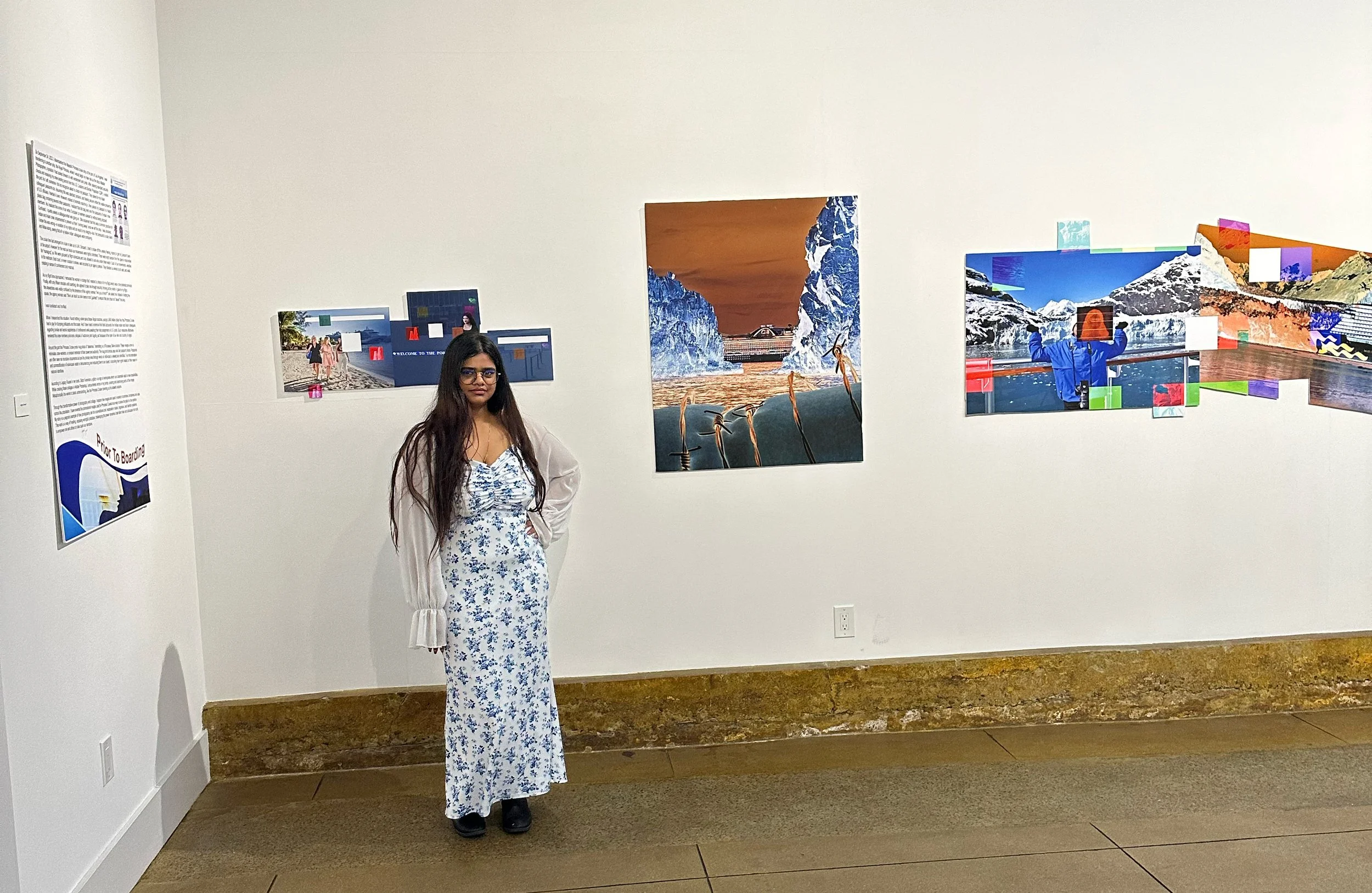The Thesis Show
On September 24, 2022, I disembarked the Majestic Princess cruise ship at the port of Los Angeles. I was transferring to another ship, the Royal Princess, where I would begin my new role as Master Photographer for a premium onboard studio—a position I had looked forward to with excitement and pride. After clearing standard security checks and receiving my crew landing permit, or “i-95,” from U.S. Customs and Border Protection (CBP), I expected to be on my way. I felt confident and prepared, carrying all the required documents while traveling to San Francisco, where I would rejoin a cruise in just a few days. Little did I know I was about to experience a stark reminder of the discrimination faced by Indian and Asian crew members like myself.
As I exited the port, someone I did not recognize asked to check my passport. Assuming this was standard protocol and feeling secure under the visible presence of U.S. officials, I handed it over. However, instead of promptly returning it, this person placed my passport in a black plastic bag containing several other passports. I quickly realized that this bag held only the passports of Indian crew members; European and other “white-majority” crew members were permitted to keep their documents. When I quietly asked a colleague what was going on, he explained that this was a common practice for Indian and Asian crew, implemented to prevent us from “running away” once we left the ship. Shocked, I froze momentarily. I knew this was wrong—a violation of my rights and an insult to my integrity—but I felt pressured to stay silent and follow along, seeing that all my fellow Indian colleagues were complying.
The cruise line had arranged for a bus to take us to LAX. Onboard, I tried to shake off the uneasy feeling, hoping to get my passport back at the airport. However, as soon as we arrived, it became clear that our movement was tightly controlled. There were 6-8 individuals from the agency responsible for “managing” us, including one woman. These agency staff had an unsettling demeanor, taking charge of our movements as if we were being detained. We were grouped by flight schedules and allowed to eat only under close watch. Each movement, whether to the restroom, food court, or even outside to smoke, was managed like a strict school trip, with orders to stay visible at all times. They directed us where to sit, wait, and walk, creating a sense of confinement and mistrust.
As my flight time approached, I reminded the woman in charge that I needed to check in for my domestic flight to San Francisco at a different terminal. She agreed to take me through security, but even here, she held onto my passport and insisted on staying with me until I boarded. The airline staff, visibly confused at the check-in counter, asked her if I was a minor. She replied that, though I was an adult, I needed to be “guarded” to ensure I did not stray in Los Angeles. This treatment, directed only at Indian and Asian crew members, felt both humiliating and discriminatory.
On the way to the gate, I asked her why this was happening. She explained that the cruise line hired an agency, which in turn employed people like her, without official records, to monitor Asian crew members until they left the country or boarded the flight that they were supposed to.
I have heard numerous accounts from Indian and Asian colleagues regarding their experiences of confinement while awaiting their ship assignment at U.S. ports. These accounts describe a restrictive and controlled environment, typically in guarded hotel accommodations, where crew members were provided only the bare essentials—water, basic meals, and a place to stay. However, the freedom to leave the premises was entirely denied. Such measures effectively rendered the crew members prisoners, stripped of autonomy and mobility. When questioned about these restrictive practices, the individuals overseeing the confinement attributed their actions to instructions from the cruise ship companies. They justified their actions by stating that these measures were necessary to prevent crew members from absconding on U.S. soil.
I have only experienced this twice at the U.S. port of Los Angeles, but this is the only port in the U.S. or the world. I wondered why it was only Los Angeles as I was flying to San Francisco from LAX. After landing at SFO, I was free to go anywhere; I could have hopped on a bus and come to Los Angeles if I wanted to.
